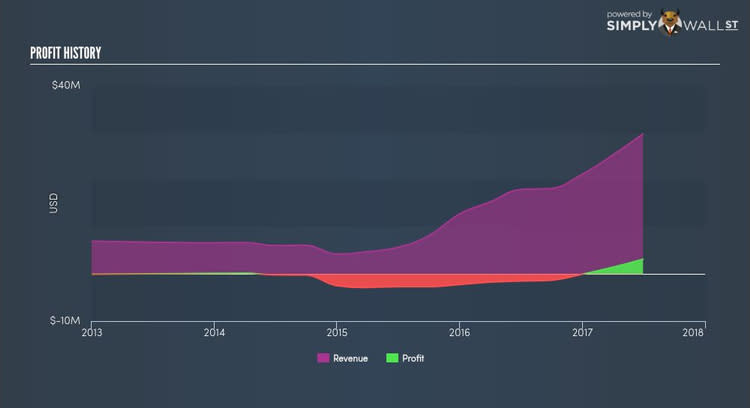What Are The Drivers Of Sunshine Bancorp Inc’s (SBCP) Risks?

If you are looking to invest in Sunshine Bancorp Inc’s (NASDAQ:SBCP), or currently own the stock, then you need to understand its beta in order to understand how it can affect the risk of your portfolio. SBCP is exposed to market-wide risk, which arises from investing in the stock market. This risk reflects changes in economic and political factors that affects all stocks, and is measured by its beta. Not all stocks are expose to the same level of market risk, and the broad market index represents a beta value of one. A stock with a beta greater than one is considered more sensitive to market-wide shocks compared to a stock that trades below the value of one.
Check out our latest analysis for Sunshine Bancorp
What is SBCP’s market risk?
Sunshine Bancorp's beta of 0.39 indicates that the stock value will be less variable compared to the whole stock market. This means that the change in SBCP's value, whether it goes up or down, will be of a smaller degree than the change in value of the entire stock market index. SBCP’s beta indicates it is a stock that investors may find valuable if they want to reduce the overall market risk exposure of their stock portfolio.
How does SBCP's size and industry impact its risk?
A market capitalisation of USD $184.69M puts SBCP in the category of small-cap stocks, which tends to possess higher beta than larger companies. Moreover, SBCP’s industry, banks, is considered to be cyclical, which means it is more volatile than the market over the economic cycle. As a result, we should expect a high beta for the small-cap SBCP but a low beta for the banks industry. This is an interesting conclusion, since both SBCP’s size and industry indicates the stock should have a higher beta than it currently has. A potential driver of this variance can be a fundamental factor, which we will take a look at next.
How SBCP's assets could affect its beta
An asset-heavy company tends to have a higher beta because the risk associated with running fixed assets during a downturn is highly expensive. I test SBCP’s ratio of fixed assets to total assets in order to determine how high the risk is associated with this type of constraint. Considering fixed assets account for less than a third of the company's overall assets, SBCP seems to have a smaller dependency on fixed costs to generate revenue. As a result, the company may be less volatile relative to broad market movements, compared to a company of similar size but higher proportion of fixed assets. This is consistent with is current beta value which also indicates low volatility.
What this means for you:
Are you a shareholder? You could benefit from lower risk during times of economic decline by holding onto SBCP. Its low fixed cost also means that, in terms of operating leverage, it is relatively flexible during times of economic downturns. Consider the stock in terms of your other portfolio holdings, and whether it is worth investing more into SBCP.
Are you a potential investor? Before you buy SBCP, you should look at the stock in conjunction with their current portfolio holdings. SBCP may be a great cushion during times of economic downturns due to its low beta and low fixed cost. However, in addition to this, I recommend taking into account its fundamentals as well before jumping into the investment.
Beta is one aspect of your portfolio construction to consider when holding or entering into a stock. But it is certainly not the only factor. Take a look at our most recent infographic report on Sunshine Bancorp for a more in-depth analysis of the stock to help you make a well-informed investment decision. But if you are not interested in Sunshine Bancorp anymore, you can use our free platform to see my list of over 50 other stocks with a high growth potential.
To help readers see pass the short term volatility of the financial market, we aim to bring you a long-term focused research analysis purely driven by fundamental data. Note that our analysis does not factor in the latest price sensitive company announcements.
The author is an independent contributor and at the time of publication had no position in the stocks mentioned.

